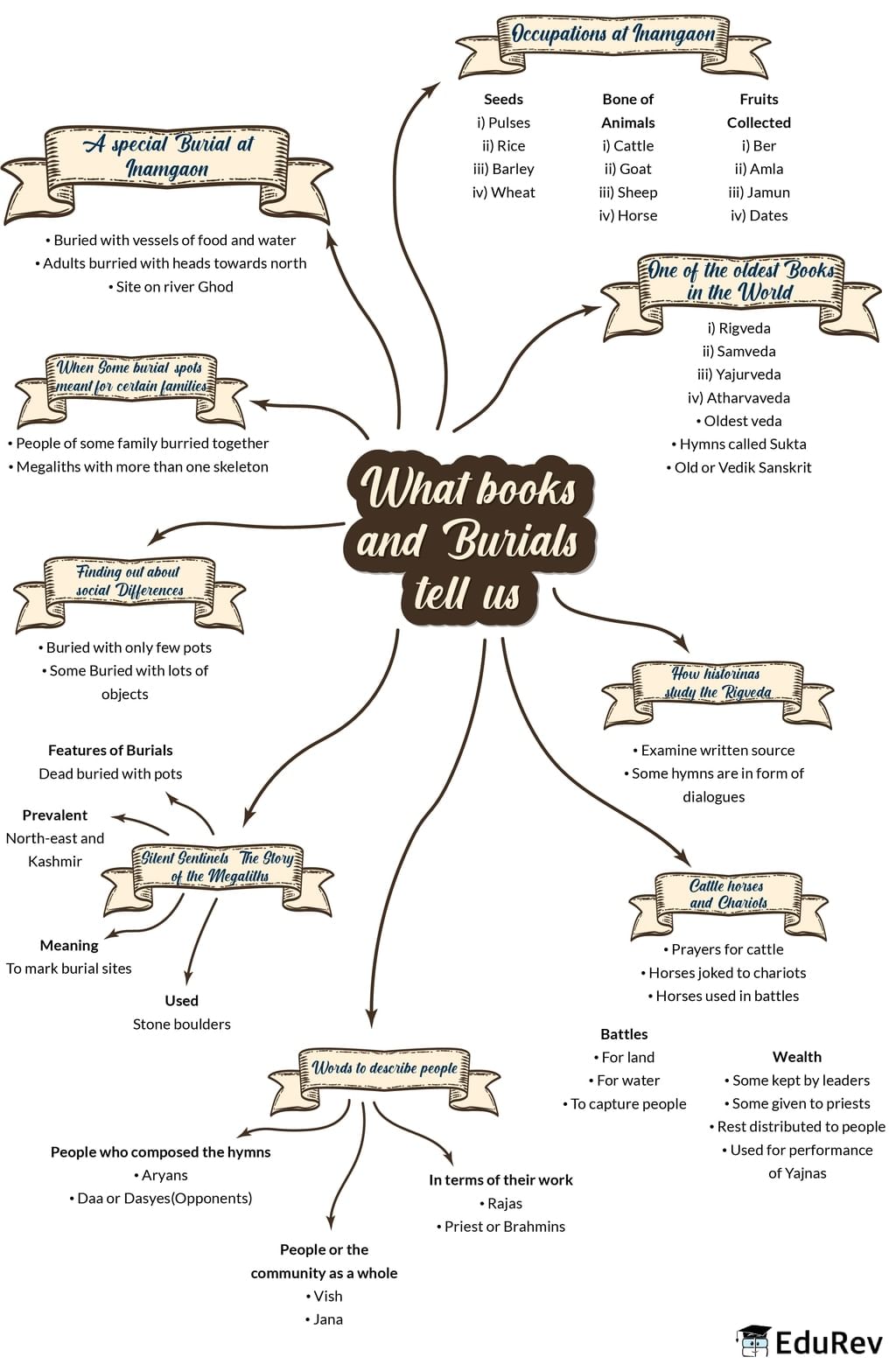Class 6 Exam > Class 6 Notes > Social Studies (SST) Class 6 > Mindmap: What books and burials tell us
Mindmap: What books and burials tell us | Social Studies (SST) Class 6 PDF Download

The document Mindmap: What books and burials tell us | Social Studies (SST) Class 6 is a part of the Class 6 Course Social Studies (SST) Class 6.
All you need of Class 6 at this link: Class 6
|
67 videos|386 docs|80 tests
|
FAQs on Mindmap: What books and burials tell us - Social Studies (SST) Class 6
| 1. What can books tell us about history? |  |
Books can provide valuable information about historical events, cultures, and perspectives. They offer insights into the thoughts, beliefs, and experiences of people from different time periods and regions. By studying books, historians can uncover details about significant events, understand societal norms and values, and gain knowledge about various aspects of human life throughout history.
| 2. How do books contribute to our understanding of the past? |  |
Books contribute to our understanding of the past by preserving historical accounts, narratives, and ideas. They serve as primary sources that document historical events and provide firsthand perspectives on different time periods. Through books, we can analyze the thoughts and motivations of individuals who lived in the past, helping us gain a more comprehensive understanding of historical contexts and their impact on society.
| 3. What can burial sites reveal about ancient civilizations? |  |
Burial sites can reveal significant information about ancient civilizations. Archaeologists study human remains, grave goods, and burial practices to understand various aspects of a civilization, such as social structure, religious beliefs, and cultural practices. Burial sites can provide insights into burial rituals, attitudes towards death, and the status of individuals within a society.
| 4. How do burials help in reconstructing historical events? |  |
Burials help in reconstructing historical events by providing evidence of past human activities, such as conflicts, epidemics, or cultural changes. By analyzing burial sites, archaeologists can identify patterns in burial practices, such as mass graves or specific burial rituals, which may indicate significant events or societal transformations. Burials also provide clues about the health, diet, and lifestyles of the individuals buried, allowing researchers to understand the conditions and challenges they faced in the past.
| 5. What can be learned from the study of ancient grave inscriptions? |  |
The study of ancient grave inscriptions can provide insights into the identities, relationships, and achievements of individuals from the past. Inscriptions on gravestones or tombs often contain personal details such as names, titles, and familial connections, offering a glimpse into the social structure and hierarchies of ancient societies. Additionally, these inscriptions may reveal information about the individual's profession, accomplishments, or religious beliefs, enriching our understanding of their lives and the historical period they lived in.

|
Explore Courses for Class 6 exam
|

|
Signup for Free!
Signup to see your scores go up within 7 days! Learn & Practice with 1000+ FREE Notes, Videos & Tests.
Related Searches

















